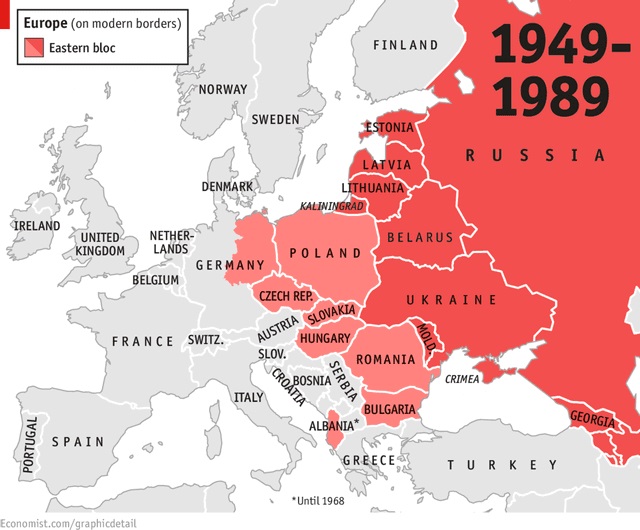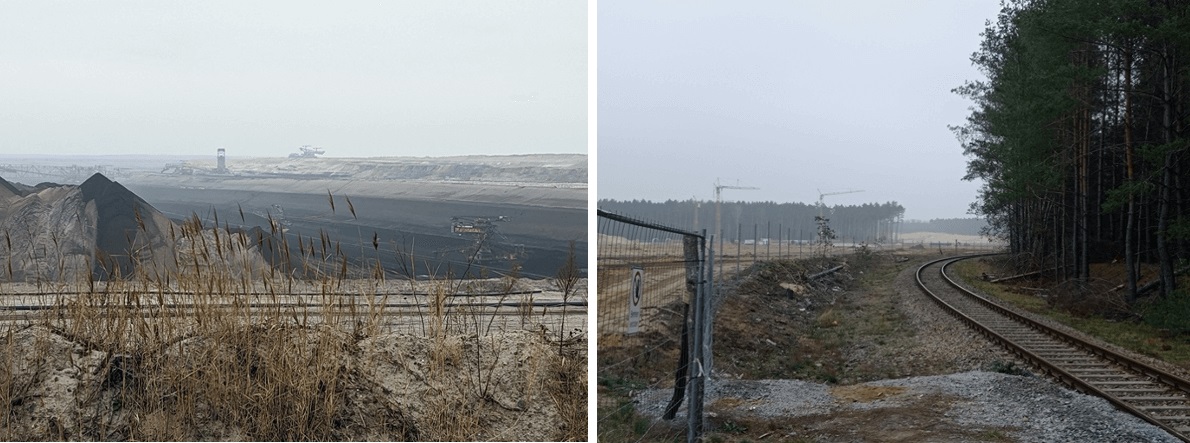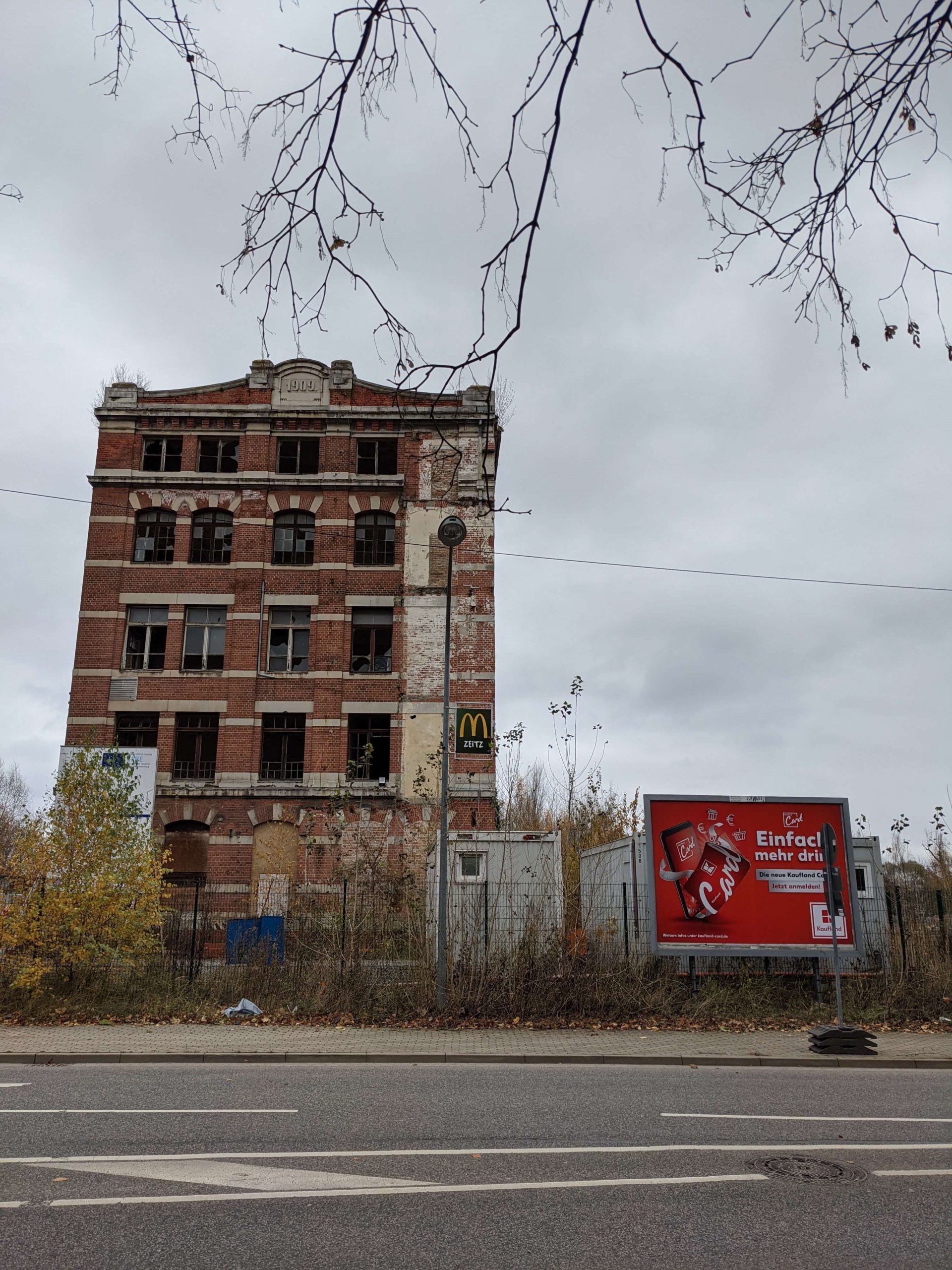‘Unboxing’ capitalist incorporation: reflections from Eastern Germany
DOI: 10.60650/EMPTINESS-87DK-1T89

Eastern Germany in the postsocialist world
Eastern Germany occupies a peculiar place in the postsocialist world. As a satellite state like Poland and Hungary, the German Democratic Republic (GDR) shared with its socialist ‘brother states’ a centralised economic organisation, the experience of shortage economy and plan fulfilment, the pursuit of socialist modernity, and the glorification of the factory worker. After 1989, Eastern Germany experienced a similar ‘shock therapy’ of capitalist transition in the form of decollectivisation and deindustrialisation, as well as the resulting emigration flows and the unsettling of the remaining citizens’ sense of subjectivity and belonging. The key difference, however, lies in the fact that Eastern Germany did not pursue its own project of nation-building after the disintegration of the socialist regime. Instead, the Eastern regions were reincorporated into the Federal Republic of Germany as the ‘new states’ (Neue Bundesländer). Thus, unlike other postsocialist states which, at least ostensibly, (re)turned to sovereignty and independence, Eastern Germany was literally subsumed into the political, economic, and ideological system of ‘the West’.
Debates about Eastern Germany’s postsocialist-ness recently experienced a revival in response to the success of the new right-wing party Alternative für Deutschland and the violent protests against state policies related to the COVID-19 pandemic. Explanations for the exploding frustrations tend to portray Eastern Germans as ‘left behind’ (abgehängt) and interpret the protests as delayed popular reactions to the harsh realities of the capitalist transition and to decades of neglect in terms of economic development and political representation.
When we talk about Eastern Germany [today], it’s like a shimmering series of images and spaces for association between Dunkeldeutschland [‘dark Germany’] and mezzogiorno on the one hand, and on the other the often cited ‘blooming landscapes’ [Helmut Kohl]: Eastern Germans are described as avantgarde, Eastern Germany even appears to be a laboratory and therefore a new route towards the future in the new postmodern capitalism 4.0 (Kirn, 'Capital and Memory', 2021).
Contemporary imaginaries of the ‘East’ – not only of Germany – comprise a kaleidoscope of images which look rather bleak: landscapes of dereliction and shrinkage, of volatile political structures and struggling economies dominate media and academic representations. After more than thirty years of ‘transitioning’, the East still hasn’t quite made it into the ‘blooming landscapes’ which the capitalist-democratic transition once promised.
The recently completed project Black Box East: Postcommunist Laboratories of Globalisation (2021) by the online newspaper Berliner Gazette adopted a decolonial lens onto the postsocialist world and proffered the argument that the contemporary ills of the ‘East’ are in fact a product of its ‘blackboxing’ for the sake of capitalist exploitation and Western ‘ethical imperialism’. Across a series of texts, talks, webinars, and cooperative projects, the contributing authors showed how the aggravation of structural problems in the ‘East’ is actively fostered to obscure ‘Western imperial’ processes of de-commonisation, unlawful privatisation, and white-collar corruption. The ‘East’ of today, the project concludes, serves as a space for capitalist expansion, a kind of unrestrained terra nullius even, for transnational capital accumulation and labour exploitation. According to the introductory essay, Eastern Germany specifically constitutes the ‘perfect territory for deterritorialised, transnational corporations and their branch offices, warehouses, call centers, and factories’. But what does it mean for ‘the East’ to be constructed as a ‘Black Box’ for obscuring the internal workings of the capitalist ‘machine’, and how might it consequently be ‘unboxed’ by its critical commentators?

Eastern alterity and decolonial postsocialism
‘The East’ is romanticised as an almost incomprehensible historical object; and it is [continuously] constructed as the Other […] In this function, ‘the East’ is constructed as an imaginary object of capitalist expansion and conquest (Woznicki 2021).
‘The East’ clearly no longer functions as an imperial Other as throughout the twentieth century. Still, one of the project’s major arguments is that even 30years after the ‘official’ end of the Cold War, the ‘East’ remains trapped in a space of alterity, as an Other still in need of development and civilising ‘therapies’ to catch up with the ‘West’. This alterity, then, is strategically upheld in order to disguise capitalism’s systematic precarisation of the ‘East’ as vestiges of the region’s socialist legacy. Capitalism’s eastward neocolonial expansion and the West’s ‘ethical imperialism’ can most readily be discerned in Eastern Germany, the contributors argue, because postsocialist political and economic dispossession has a face here in the form of the West German elite which took the baton after 1989. The scale of dispossession is estimated at more than 3,000 industrial closures and 3 million layoffs which rendered about 80% of the Eastern population temporarily or permanently jobless. As Eastern educational degrees were devalued, most managerial posts were assigned to Western Germans:
After 1989, we really didn’t trust ourselves. We made ourselves small. If two people applied for a job, it was always the Wessi [Westerner] that won. They just knew better how to represent themselves (Kluhs and Krone, 'The Elbow Principle', 2021).
By subsuming ‘the East’ into ‘the West’ as ‘second-class citizens’ and an Other within, the ‘Eastness’ of Eastern Germany was then turned into a neglectable chapter of history and rendered invisible in the political reorganisation of the present – unless used as an antagonism:
[In German education], the GDR is actually discussed only once, in Economy in 10th grade, two hours. When you teach central administration economy – and that this is not working [sic]. Where you compare it with free market economy, social market economy and so on. […] Apart from that the GDR belongs to the past, is history, it rarely appears (Kluhs and Krone, 'The Elbow Principle', 2021).
Beyond this denigrating position of alterity, the ‘East’ shares also the experience of being rendered ‘underdeveloped’ in the course of capitalist expansion with other postcolonial states, including the need to develop towards the standards of ‘the West’ through developmental programmes. After reunification, the Eastern German regions ‘didn’t fit the bill’ as their metrics exposed significant disparities in terms of GDP and average income compared to their Western counterparts. To eliminate them, Germany introduced the development programme ‘Reconstruction East’ (Aufbau Ost) financed by the solidarity surcharge (Solidaritätszuschlag), a 5.5.% tax on income to help level the East towards the West – on Western terms, of course.
The Black Box East project demonstrates, however, that ‘the East’ in fact offers plenty of locations from which capitalism can be critiqued and its internal workings ‘unboxed’ if this dynamic of neocolonial Othering is renounced. That is, if precarity is seen as neither a legacy of the socialist past nor as a shortcoming on the transitional path to capitalism, but instead as an integral element of the capitalist order. Indeed, reading the capitalist transition as a form of colonisation and analysing the East through a de- or postcolonial lens have become more popular as analytics for interpreting the contemporary state of the postsocialist world (e.g. Chari and Verdery 2009, Tlostanova 2012, Moore 2001, Müller 2018, Milev 2020).
While this lens is helpful for unpacking new forms of unlawful dispossession, labour exploitation, non-democratic alliances of state and corporate power, or Orientalising representations that justify developmental interventions, I wonder whether it is productive for painting a comprehensive picture about the East. Contrary to identifiable colonial powers, capitalism is not one homogenous entity but a complex transnational web of manifold actors, policies, and logics, which renders the victim-coloniser logic simplistic. Moreover, if a decolonial lens is adopted, it is crucial to recognise that also the socialist period involved dispossession, unfreedom, exploitation, and imperialism. Forced collectivisation dispossessed peasants of their land and livestock, and manufacturers of their businesses. Eastern Germans were caged behind the Wall, built in 1961 to prevent growing numbers of the labour force from leaving the socialist republic. And those who stayed experienced decades of ideological censorship, repression, and exploitation in assigned jobs or on unpaid labour days (subbotniks). To focus the lens solely on neo-colonial dynamics under capitalism risks obscuring the socialist project in turn, which was in its actually existing forms similarly expansionistic and exploitative. If anything, the analytical lens would need to be doubly decolonial.
Yet another transformation
In 2021, Eastern Germany began another phase of (re)development and structural transformation. With the mandated closure of the coal industry by 2030 to meet global climate targets, the region is currently developing strategies to replace its biggest economic players with other, more ‘future-oriented’ industries. One example referenced by the Black Box East project is the Tesla Gigafactory which is being built in Grünheide near Berlin. Lauded by state politicians as an opportunity for economic development and job creation, Tesla was able to raise the factory within two years, based on preliminary permits (Vorabgenehmigungen)which allowed the company to bypass normal bureaucratic procedures, including the mandatory consultation of the public. One contributor therefore describes Tesla’s settlement as ‘disruptive innovation’ wherein ‘old business models or economic or political practices’ are interrupted and ‘capital interests can be served quasi at will’. Reading the construction of the Gigafactory as a battle between an alliance of local politicians and transnational capitalist players on the one hand, and the Eastern German ‘normality class’ on the other, he asks: Who will destroy whom – or maybe: who will absorb whom into which normality?

It is at these physical sites of capitalist expansion where, as another contributor puts it, ‘the future is sold to capital’, that the ‘real people’ of the East become an avantgarde – as ‘pioneers of precarity’ who prefigure the extreme flexibilization of the labour market and the erosion of worker’s rights under late capitalism. This argument resembles Comaroff and Comaroff’s (2012) hypothesis that ‘Euro-America is evolving toward Africa’: the East, alongside the Global South, seems to attain a ‘strategic advantage’ over the West because these regions already experience a fate which will eventually also overcome the capitalist West itself.
The Black Box East project constructs – not quite a ‘savage slot’ (Trouillot 2003) – but a precarity slot for the East and fills it with significant parts of the postsocialist population, most notably those who work as migrant, seasonal, or ghost workers. The contributions focus on making capitalist exploitation visible and introduce stories of ‘the wretched of the east’ who reside at the bottom of the spectrum of postsocialist existence. Their decolonial interpretation seems to suggest that becoming something other than socialist and colonised means to become precarious and exploited. Consequently, this entails that the East’s transformation experience towards labour market precarity, migration, and disenchantment is what comprises its avantgardism – not the wit of finding ways out of the quagmire.

Postsocialism, precarity, and what comes next?
In the more hopeful discourse around Eastern Germany’s energy transition, the re-industrialisation projects are portrayed as opportunities for revitalising rural and postindustrial areas, even for ‘reinventing’ the region and restoring the subjectivity and confidence of its citizens. This rhetoric is shared by politicians and representatives of civic initiatives who argue that the post-coal structural transformation constitutes an opportunity for ‘the people’ to emerge from decades of feeling insecure and to finally take charge of their own future again.
In my view, the growing number of civic associations who demand participation ‘from below’ in the coming transformation opens a prospect for reformulating Eastern subjectivities beyond the images of ‘whining Easterners’ (Jammerossis), neo-Nazis, and westward economic migrants. These groups demonstrate that more is happening in the East than ‘therapies and impositions’ from above which are suffered by unconfident and helpless people. Calling the East merely a ‘laboratory’ of globalisation and capitalist expansion undermines any form of agentive argument, as it implies that the East is subjected to rather than working out the making of its postsocialist and/or postcolonial future. To study the post-coal transformation only as yet another ‘Black Box’ for masking the exploitation of Eastern territories for transnational capital accumulation would therefore enlighten only half of the story. Taking ‘the East’ seriously requires an exploration of its diverging internal dynamics, and studies of ‘actually existing postsocialisms’ should also offer stories about new forms of agency and subjectivity which are produced by the ‘real people’ of the East beyond the victim role.
The Black Box East project was clearly a call for more ‘theory from the East’, and it undoubtedly offers a valuable counterpoint to liberal theories which uphold the promises of capitalism and subscribe to its logic. But in order to truly ‘unbox’ the East, the East must not only begin to speak for itself, but also dare to emerge from the precarity slot if it wants to be represented as more than an easy target of (neo)colonial interference. The next question could therefore be: What would Eastern agency and subjectivity beyond the rehearsing of the transition loser and homo sovieticus archetypes entail? Perhaps the impetus of the Black Box East project could be marking the starting point for a ‘writing back’ movement made in the East.

This is an Open Access article, distributed under the terms of the CC-BY (Creative Commons Attribution 4.0 International) licence, which permits unrestricted re-use, distribution, and reproduction in any medium, provided the original work is properly cited.